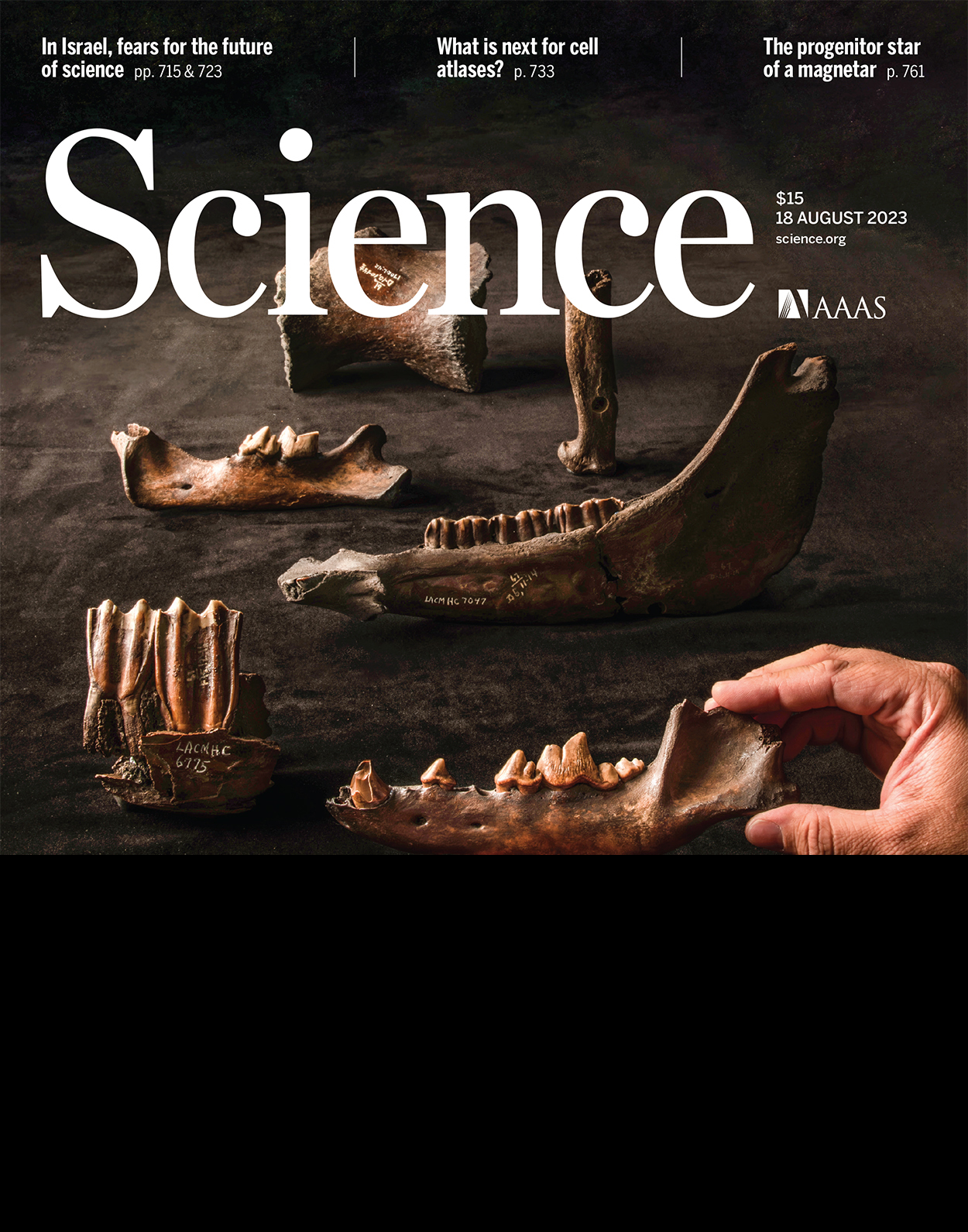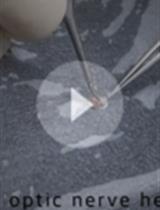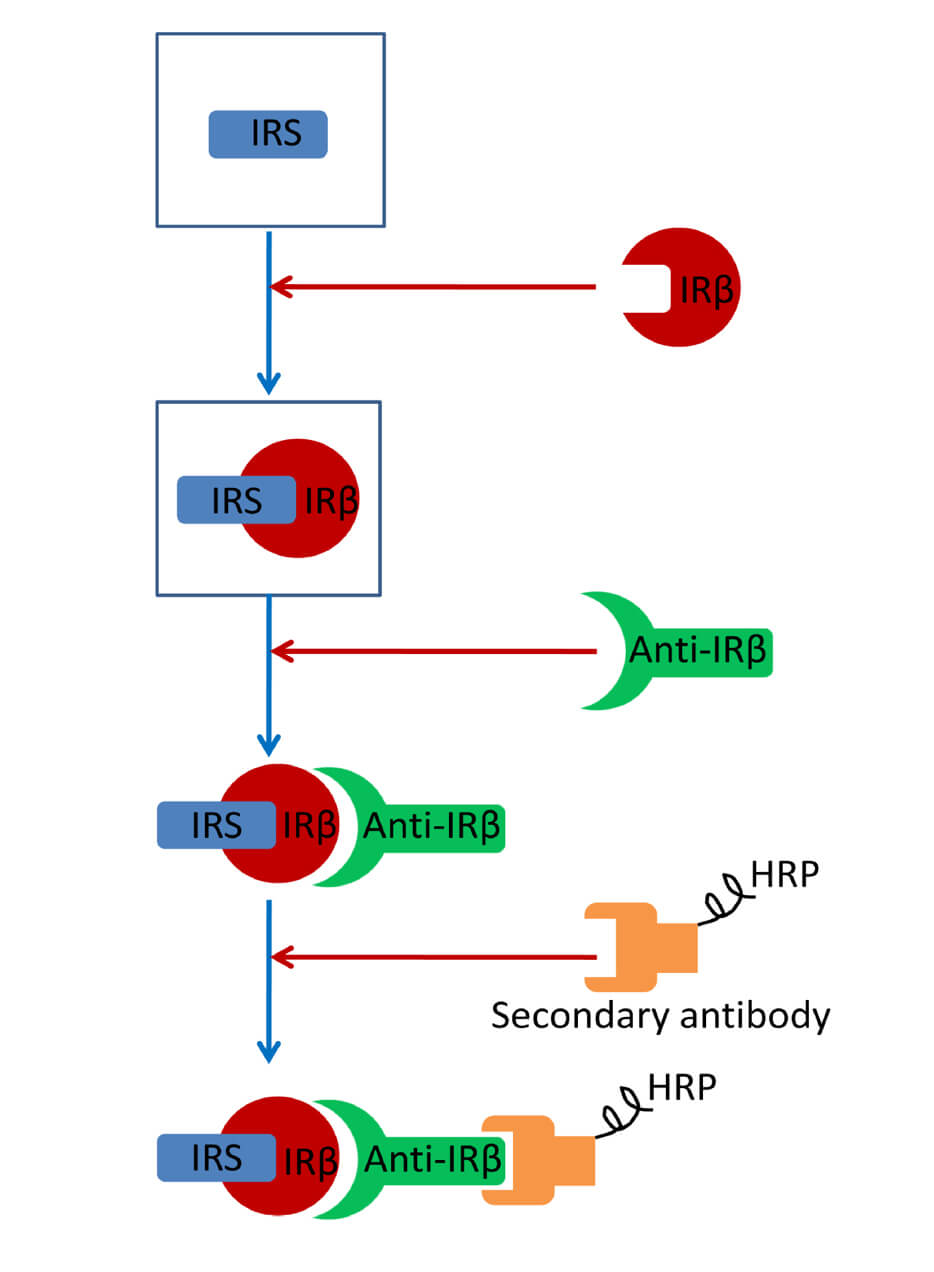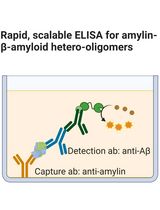- EN - English
- CN - 中文
Western Blotting and Immunoprecipitation of Native Human PIEZO1 Channels
人源PIEZO1机械敏感通道的蛋白印迹与免疫共沉淀分析
(§Technical contact: j.li2@victorchang.edu.au) 发布: 2025年07月20日第15卷第14期 DOI: 10.21769/BioProtoc.5385 浏览次数: 2344
评审: Joyce ChiuAnonymous reviewer(s)
Abstract
PIEZO1 is a mechanically activated ion channel essential for mechanotransduction and downstream signaling in almost all organ systems. Western blotting is commonly used to study the expression, stability, and post-translational modifications of proteins. However, as a large transmembrane protein, PIEZO1 contains extensive hydrophobic regions and undergoes post-translational modifications that increase its propensity for nonspecific protein–protein interactions. As a result, conventional sample preparation methods seem unsuitable for PIEZO1. For example, heating and sonicating transmembrane proteins exposes hydrophobic regions, leading to aggregation, improper detergent interactions, and loss of solubility, ultimately compromising their detection in western blots. To address these challenges, we developed a western blot protocol optimized for human PIEZO1 by preparing lysates consistently at lower temperatures and incorporating strong reducing and alkylation reagents into the western blot lysis buffer to ensure proper protein solubilization and minimal cross-linking. Using the same antibody, we also developed an immunoprecipitation protocol with optimized detergents to maintain the solubilization of native human PIEZO1, enabling the discovery of a new family of auxiliary subunits.
Key features
• Simple modifications to the standard RIPA buffer prevent protein aggregates of large transmembrane proteins.
• Minimal protein degradation and cross-linking by modifying cell lysis conditions and protein extraction process.
• Clear separation of glycosylated and non-glycosylated PIEZO1 by SDS-PAGE.
Keywords: Mechanotransduction (机械转导)Background
PIEZO1 is a mechanically activated ion channel that responds to shear stress and membrane tension [1] to regulate downstream signaling pathways crucial in vascular development [2], cardiac remodeling [3], baroreception, and many other processes. Given its physiological importance, the ability to accurately detect and quantify PIEZO1 protein levels in cells and tissues is critical for studying its regulation and function. Western blotting is a widely used technique to examine protein expression, stability, and post-translational modifications (PTMs). For PIEZO1, western blotting is particularly useful for assessing PTMs such as ubiquitination or N-glycosylation [4], protein–protein interactions [5], and expression changes in response to cellular interventions. However, due to the unique structural properties of PIEZO1, traditional western blot methodologies seem inadequate for its detection.
To overcome these limitations, we have developed western blot and immunoprecipitation protocols specifically optimized for human PIEZO1. For western blot, we made key modifications that improve electrophoretic mobility and prevent cross-linking, degradation, and aggregation. We validated a monoclonal antibody from Novus Biologicals that gives robust human and pig PIEZO1 signals and recognizes both denatured and solubilized human PIEZO1. Importantly, using this protocol, this primary PIEZO1 antibody does not recognize mouse PIEZO1[4]. We make use of gradient polyacrylamide gels to enhance the separation of the large membrane proteins and enable effective transfer of human PIEZO1. This is coupled with optimized transfer conditions using extended time at a high stable current (140 min wet transfer at 300 mA). Furthermore, we used a strong reducing agent (TCEP) and an alkylation reagent (NEM) during cell lysis. Adding these two reagents allows PIEZO1 to yield a clear, robust band on western blot with repeated freeze-thaw cycles of the lysates. Instead of boiling at 95 °C, we prepare lysates continuously on ice before loading them onto the gel to prevent heat-induced protein aggregation. The only time we heat PIEZO1 samples is to remove immunoprecipitated human PIEZO1 from magnetic beads coated with the primary antibody. This immunoprecipitation protocol has ultimately allowed us to co-immunoprecipitate native human PIEZO1 along with associated proteins under near-native conditions and identify a new family of PIEZO channel auxiliary subunits.
Materials and reagents
Biological materials
1. LNCaP clone FGC cell line [American Type Culture Collection (ATCC), catalog number: CRL-1740, derived from a metastatic prostate carcinoma]
2. HeLa cell line (ATCC, catalog number: CCL-2, derived from a cervical carcinoma)
3. MCF-7 cell line (ATCC, catalog number: HTB-22, from the pleural effusion of a 69-year-old Caucasian woman with metastatic breast adenocarcinoma)
4. HEK293T (ATCC, catalog number: CRL-3216, a derivative of the original HEK293 cells stably expressing SV40 large T antigen)
5. HEK293T-Piezo1-/- (gift from Ardem Patapoutian)
6. Human dermal fibroblasts BJ-5ta cell line (ATCC, catalog number: CRL-4001, hTERT-immortalized human foreskin fibroblast line, derived from a neonatal male)
7. Human cardiac fibroblasts (HCF) (PromoCell GmbH, catalog number: C-12375, isolated from the ventricles of adult human hearts)
8. Porcine aortic endothelial cells (PAOEC) (Cell Applications, Inc., catalog number: P304-05, isolated from normal healthy porcine aorta)
9. Human umbilical vein endothelial cells (HUVECs) (ATCC, catalog number: PCS-100-010, isolated from the umbilical vein of human umbilical cords)
Reagents
1. Dulbecco's modified Eagle medium (DMEM) (Sigma-Aldrich, catalog number: D6429)
2. RPMI 1640 medium with L-Glutamine (Gibco, catalog number: 23400062)
3. EGMTM-2 Endothelial Cell Growth Medium-2 BulletKitTM (Lonza Bioscience, catalog number: CC-3162)
4. FGMTM-2 Fibroblast Growth Medium-2 BulletKitTM (Lonza Bioscience, catalog number: CC-3132)
5. HyCloneTM characterized fetal bovine serum (FBS), Australian origin (Cytiva, catalog number: DE29445779)
6. TrypLETM Express trypsin (Gibco, catalog number: 12604021)
7. Dulbecco’s phosphate-buffered saline (DPBS) (Gibco, catalog number: 14190144)
8. Sodium hydroxide (NaOH) (Sigma-Aldrich, CAS number: 1310-73-2)
9. Ethylenediaminetetraacetic acid (EDTA) (Sigma-Aldrich, CAS number: 60-00-4)
10. Sodium deoxycholate (Sigma-Aldrich, CAS number: 302-95-4)
11. Sodium dodecyl sulfate (SDS) (Sigma-Aldrich, CAS number: 151-21-3)
12. Triton X-100 (Thermo ScientificTM, catalog number: 85112)
13. Tris (2-carboxyethyl) phosphine (TCEP) hydrochloride (Sigma-Aldrich, CAS number: 51805-45-9)
14. N-ethylmaleimide (NEM) (Thermo Scientific, catalog number: 23030)
15. Phenylmethylsulfonyl fluoride (PMSF) (Roche, CAS number: 329-98-6)
16. cOmpleteTM EDTA-free mini protease inhibitor cocktail tablets (Roche, catalog number: 11836170001)
17. Polyethylene glycol sorbitan monolaurate (TWEEN® 20) (Sigma-Aldrich, CAS number: 9005-64-5)
18. TRIS-buffered saline (TBS, 10×) pH 7.4 (Thermo Fisher Scientific, catalog number: J60764.K7)
19. Sodium azide (NaN3) (Sigma-Aldrich, catalog number: S2002)
20. PierceTM BCA Protein Assay kit, reducing agent compatible (Thermo Fisher Scientific, catalog number: 23250)
21. PIEZO1 antibody (Clone 2-10) (Novus Biologicals, catalog number: NBP2-75617)
22. Goat anti-mouse IgG secondary antibody, IRDye 800CW (LI-COR Biosciences, catalog number: 926-32210)
23. α-ACTININ (H-2) antibody (Santa Cruz Biotechnology, catalog number: sc-17829)
24. DynabeadsTM protein G for immunoprecipitation (ThermoFisher, catalog number: 10003D)
25. Soy PC (95%) (Avanti, catalog number: 441601G)
26. CHAPS hydrate (Sigma-Aldrich, CAS number: 331717-45-4)
27. PIPES (Sigma-Aldrich, CAS number: 5625-37-6)
28. Urea (QIAGEN, catalog number: 11557305)
29. MillexTM MCE syringe filter (Millipore, catalog number: SLGSR33SS)
30. NuPAGETM tris-acetate mini protein gels, 3%–8%, 1.0 mm, 10 wells, 10 gels/box (Invitrogen, catalog number: EA0375BOX)
31. UltraPure™ glycerol (ThermoFisher, catalog number: 15514011)
32. Bromophenol blue powder (Bio-Rad, catalog number: 1610404)
33. Tris(hydroxymethyl)aminomethane (Sigma-Aldrich, CAS number: 252859)
34. Ponceau S (Sigma-Aldrich, CAS number: 141194)
35. Glacial acetic acid (Sigma-Aldrich, CAS number: A6283)
36. Sodium piperazine-N, N′-bis (2-ethanesulfonic acid) (NaPIPES) (Sigma-Aldrich, CAS number: P2949)
37. Soy phosphatidylcholine (Sigma-Aldrich, CAS number: P7443)
38. DL-Dithiothreitol (ThermoFisher, catalog number: R0861)
Solutions
1. 200 mM PMSF in ethyl alcohol (see Recipes)
2. 2 M NEM in ethyl alcohol (see Recipes)
3. 1 M TCEP in water (see Recipes)
4. 1× Modified radio-immunoprecipitation assay (RIPA) buffer (see Recipes)
5. 5 Sample loading buffer (see Recipes)
6. Running buffer (see Recipes)
7. Transfer buffer (see Recipes)
8. Ponceau S Solution (see Recipes)
9. Immunoprecipitation lysis buffer (see Recipes)
10. Immunoprecipitation wash buffer (see Recipes)
11. Immunoprecipitation elution buffer (see Recipes)
Recipes
1. 200 mM PMSF in ethyl alcohol (store at -20 °C)
| Reagent | Final concentration | Quantity |
|---|---|---|
| PMSF | 200 mM | 35 mg |
| Pure ethanol | n/a | 1 mL |
| Total | n/a | 1 mL |
2. 2 M NEM in ethyl alcohol (store at -20 °C)
| Reagent | Final concentration | Quantity |
|---|---|---|
| NEM | 2 M | 222.28 mg |
| Pure ethanol | n/a | 1 mL |
| Total | n/a | 1 mL |
3. 1 M TCEP in water (store at -20 °C)
| Reagent | Final concentration | Quantity |
|---|---|---|
| TCEP hydrochloride | 1 M | 286.65 mg |
| Distilled H2O | n/a | 684 μL |
| 10 M NaOH solution | Adjust pH to 7 | 316 μL |
| Total | n/a | 1 mL |
4. 1× Modified radio-immunoprecipitation assay (RIPA) buffer (store at -20 °C)
| Reagent | Final concentration | Quantity |
|---|---|---|
| Distilled water | 9550 μL | |
| 1 M Tris buffer (pH 7.5) | 10 mM | 100 μL |
| EDTA | 1 mM | 3.7224 mg |
| NaCl | 140 mM | 81.82 mg |
| Sodium deoxycholate | 0.1% w/v | 10 mg |
| SDS | 0.1% w/v | 10 mg |
| Triton X-100 | 1% v/v | 100 μL |
| 200 mM PMSF | 1 mM | 50 μL |
| 1 M TCEP (pH 7) | 10 mM | 100 μL |
| 2 M NEM | 20 mM | 100 μL |
| EDTA-free mini protease inhibitor cocktail tablets | 1× | 1 tablet |
| Total | n/a | 10 mL |
TCEP and NEM can react [6], which may impair the reducing and alkylating efficiency. One alternative option to circumvent this is to first lyse cells using modified RIPA buffer without NEM, then add 20 mM NEM to prevent the potential TCEP-NEM reaction.
Additionally, 25 mM sodium fluoride (NaF) and 1 mM sodium orthovanadate (NaVO3) can be added to the modified RIPA if there is a necessity to investigate phosphorylated proteins.
5. 5× sample loading buffer (store at room temperature)
| Reagent | Final concentration | Quantity |
|---|---|---|
| SDS | 10% w/v | 10 g |
| Glycerol | 50% v/v | 50 mL |
| 1 M Tris-HCl (pH 6.8) | 250 mM | 25 mL |
| Bromophenol blue | 500 μM | 33.5 mg |
| Distilled H2O | n/a | 25 mL |
| Total | n/a | 100 mL |
6. Running buffer (store at room temperature)
| Reagent | Final concentration | Quantity |
|---|---|---|
| Glycine | 1.5% w/v | 15 g |
| Tris(hydroxymethyl)aminomethane | 0.5% w/v | 5 g |
| SDS | 0.1% w/v | 1 g |
| NaOH | 0.3% w/v | 3 g |
| Distilled H2O | n/a | 1 L |
| Total | n/a | 1 L |
7. Transfer buffer (store at room temperature)
| Reagent | Final concentration | Quantity |
|---|---|---|
| Glycine | 1% w/v | 10 g |
| Tris(hydroxymethyl)aminomethane | 0.25% w/v | 2.5 g |
| Absolute ethanol | 20% v/v | 200 mL |
| Distilled H2O | n/a | 800 mL |
| Total | n/a | 1 L |
8. Ponceau S Solution (store at room temperature)
| Reagent | Final concentration | Quantity |
|---|---|---|
| Ponceau S Red | 0.1% w/v | 100 mg |
| Glacial acetic acid | 5% v/v | 5 mL |
| Distilled H2O | n/a | 95 mL |
| Total | n/a | 100 mL |
9. Immunoprecipitation lysis buffer (store at -20 °C)
| Reagent | Final concentration | Quantity |
|---|---|---|
| Distilled water | 10 mL | |
| Sodium piperazine-N,N′-bis(2-ethanesulfonic acid) (NaPIPES) | 25 mM, pH 7.2 | 75.6 mg |
| EDTA | 1 mM | 3.71 mg |
| CHAPS | 1% w/v | 100 mg |
| NaCl | 140 mM | 81.82 mg |
| Soy phosphatidylcholine | 0.6% w/v | 60 mg |
| DTT | 2 mM | 3.09 mg |
| EDTA-free mini protease inhibitor cocktail tablets | 1× | 1 tablet |
| Total | n/a | 10 mL |
10. Immunoprecipitation wash buffer (store at -20 °C)
| Reagent | Final concentration | Quantity |
|---|---|---|
| Distilled water | 10 mL | |
| NaPIPES | 25 mM, pH 7.2 | 75.6 mg |
| EDTA | 1 mM | 3.71 mg |
| CHAPS | 0.5% w/v | 50 mg |
| NaCl | 140 mM | 81.82 mg |
| Soy phosphatidylcholine | 0.14% w/v | 28 mg |
| DTT | 2 mM | 3.09 mg |
| EDTA-free mini protease inhibitor cocktail tablets | 1× | 1 tablet |
| Total | n/a | 10 mL |
11. Immunoprecipitation elution buffer (store at -20 °C)
| Reagent | Final concentration | Quantity |
|---|---|---|
| 5× sample loading buffer | 1× | 200 μL |
| 8 M urea | 1 M | 125 μL |
| 1 M TCEP | 10 mM | 10 μL |
| Distilled H2O | n/a | 665 μL |
| Total | n/a | 1 mL |
Laboratory supplies
1. Corning® 25 cm2 rectangular canted neck cell culture flask with vented cap (Corning Incorporated, catalog number: 431463)
2. Costar® 24-well clear TC-treated 24-well plates (Corning Incorporated, catalog number: 3524)
3. QSP snap cap microcentrifuge tubes (Thermo Scientific, catalog number: 509-GRD-Q)
4. Corning® Costar® Stripette® serological pipette (Corning Incorporated, catalog number: CLS4488)
5. NovexTM sharp pre-stained protein standard (Invitrogen, catalog number: LC5800)
Equipment
1. LI-COR Odyssey 9120 Infrared Imaging System (LI-COR Biosciences, model: 9120)
2. Heracell 150 CO2 Incubator (Thermo Fisher Scientific, model: 51026283)
3. Eppendorf Centrifuge 5425 R (Eppendorf AG, model: EP5406000569)
4. TE 22 Mini Tank Transfer Unit (Cytiva, model: 80620426)
5. Cassette with sponges TE22 Mini Tank Transfer Unit (Hoefer, Inc. catalog number: TE24)
6. WhatmanTM Grade 3MM Chr chromatography paper (Cytiva, catalog number: 3030-917)
7. Nitrocellulose membrane, 0.2 μm (Bio-Rad Laboratories, catalog number: 1620112)
8. Refrigerated water bath with pump out facility (10 Litre) (Ratek Instruments Pty Ltd. model: BL-30)
9. PowerPacTM basic power supply (Bio-Rad Laboratories, catalog number: 164-5050)
10. XCell SureLockTM Mini-Cell gel electrophoresis system (InvitrogenTM, catalog number: EI0001)
11. PHERAstarFS microplate reader (BMG LABTECH, model: FSX)
12. Bright-LineTM hemacytometer (Hausser Scientific, model: Z359629)
13. DynaMagTM-2 magnet (ThermoFisher, catalog number: 12321D)
Software and datasets
1. Image StudioTM Software (LI-COR Biosciences, versions 4.x)
2. Microsoft Excel (Microsoft, Microsoft Office 2020)
Procedure
文章信息
稿件历史记录
提交日期: Apr 19, 2025
接收日期: Jun 6, 2025
在线发布日期: Jul 4, 2025
出版日期: Jul 20, 2025
版权信息
© 2025 The Author(s); This is an open access article under the CC BY license (https://creativecommons.org/licenses/by/4.0/).
如何引用
Readers should cite both the Bio-protocol article and the original research article where this protocol was used:
- Vero Li, J., Zhou, Z. and Cox, C. D. (2025). Western Blotting and Immunoprecipitation of Native Human PIEZO1 Channels. Bio-protocol 15(14): e5385. DOI: 10.21769/BioProtoc.5385.
- Zhou, Z., Ma, X., Lin, Y., Cheng, D., Bavi, N., Secker, G. A., Li, J. V., Janbandhu, V., Sutton, D. L., Scott, H. S., et al. (2023). MyoD-family inhibitor proteins act as auxiliary subunits of Piezo channels. Science. 381(6659): 799–804. https://doi.org/10.1126/science.adh8190
分类
生物化学 > 蛋白质 > 免疫检测
生物物理学
细胞生物学 > 细胞结构
您对这篇实验方法有问题吗?
在此处发布您的问题,我们将邀请本文作者来回答。同时,我们会将您的问题发布到Bio-protocol Exchange,以便寻求社区成员的帮助。
提问指南
+ 问题描述
写下详细的问题描述,包括所有有助于他人回答您问题的信息(例如实验过程、条件和相关图像等)。
Share
Bluesky
X
Copy link












